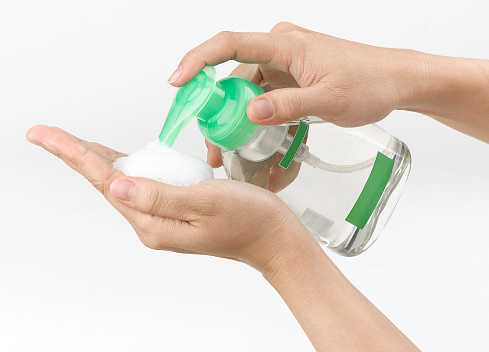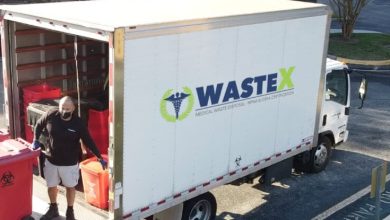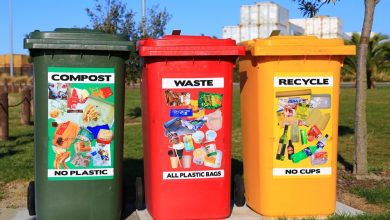Using Antibacterial Soap vs. Using Soap and Hot Water

Last year, while visiting my daughter, her friend and I were debating the advantages of handmade soap vs. commercial soap. He said that he just used antibacterial soap and nothing else. I was curious, so I asked him why he felt antibacterial soap was better than handmade soap. “Because it contains chemicals that fight bacteria and germs,” he said.
With all of the advertising on television and magazine adverts about germs and bacteria, I suppose a big percentage of people would agree with him. Despite the fact that I’ve been making handmade soap for years, I’ve never really understood how it cleans. I simply assumed that since I showered with soap, I was clean. His comment piqued my interest.
Table of Contents
Antibacterial Soap vs. Using Soap and Hot Water
I did some research and came across this article from “Discovery Fit & Health” that discusses how soap cleans. The explanation is straightforward. One portion of a soap molecule is hydrophilic (it adheres to water), while the other is hydrophobic (it repels water) (repels water). The hydrophilic component allows the hydrophobic fatty acids to interact with other hydrophobic compounds, such as dirt or grime. When dirt or filth adheres to the fatty acids in the soap, it becomes encapsulated in droplets of water. When you rinse, the filth and grime that has been encapsulated are also rinsed away.
We all know that conventional soap and hot water will clean our skin. But is antibacterial soap more effective at eliminating bacteria and germs than soap and hot water? Or is this a marketing ploy?
How antibacterial soaps Work
What precisely is it about antibacterial soap that makes it so effective? And how does this component keep killing germs active throughout the life of the soap? After doing some research online, I discovered that Triclosan is the most frequent chemical used by commercial firms to manufacture antibacterial soap, and it comes in the form of a powder.
Because I don’t know any soap makers that manufacture antibacterial soap, I wanted to learn how commercial firms make their soap in order to answer my questions. I’ve read several times that commercial corporations manufacture detergent rather than soap. That is correct in some circumstances, but not all.
In a nutshell, they use what soap makers refer to as the “Hot Process Method.” Essentially, oils, liquids, and lye are blended and stirred in enormous vats heated to 80 to 100 degrees. The mixture is repeatedly agitated until it has saponified or transformed into the soap you see in soap boxes wholesale. Some corporations utilize chemicals to make soap. But since oil, lye, and liquid are not the primary constituents, the resulting product is a “detergent.”
Check Triclosan
I investigated the Internet with the aim of determining where in the soap-making process commercial firms introduced Triclosan. Lye is corrosive and may readily destroy most additives, particularly those that are delicate. However, if the soap mixture has been mixing long enough to begin saponification, the molecular structure of the lye will have changed, and it will no longer be caustic. Triclosan could then be safely added without fear of it being destroyed or weakened by contact with the liquid, lye, and oils.
Antibacterial soap, according to commercials, is what everyone should use. They need it if they wish to have a clean body free of bacteria and germs. These advertisements do not inform you that in order for the antibacterial soap to be effective, the lather must remain on your skin for at least 2 minutes. Who lathers up and then stands about for two minutes while Triclosan works? Because I lather and then rinse, antibacterial soap would not have a chance to kill many germs or bacteria on my skin.
His explanation that it contains chemicals that destroy bacteria and germs is entirely correct. One thing he didn’t realize, and neither did I was that Triclosan kills all germs, good and bad; it doesn’t discriminate. Good bacteria are what we need for our bodies to function properly.
Cleaning Is Almost The Same
There is no evidence in any of the publications I check that antibacterial soap can clean better than conventional soap and hot water. Indeed, I see multiple articles claiming that Triclosan is harmful to the environment. It can damage our pets, and many individuals are or will become allergic to it. Another problem raised in numerous publications is that bacteria and germs may grow resistant to Triclosan over time.
I’ve spoken about how washing kills germs and bacteria on our bodies, but what about germs and bacteria that reside on washroom surfaces? I mean, if you’re going to go to the trouble of using only antibacterial soap, doesn’t it important that the one area where you bathe also has the highest concentration of germs and bacteria?
Given its purpose, I’ve always assumed that the toilet was quite germy. It is true even when it’s spotless. The toilet generates an invisible gas of germs and bacteria with each flush. It may linger in the air for up to two hours. Okay, it’s fairly gross, but what I didn’t realize is that the sink is the most germ-infested surface in the bathroom. However, it makes sense since there is where we brush our hair, wash our faces and hands, shave, and brush our teeth. The drain is also always damp.
The Final Thought
Antibacterial soap does not leave a protective barrier on your skin to protect you from the new bacteria and germs you will come into contact with as soon as you walk out of the shower. So, after reading all of this, I am curious as to where my daughter’s buddy keeps his towel while bathing. Perhaps the towel rack over the toilet?
To summarize, I feel there are situations when using antibacterial soap might be advantageous, such as in medical institutions or while preparing food. However, I have not seen convincing evidence that washing with antibacterial soap is superior to washing with soap and hot water.




